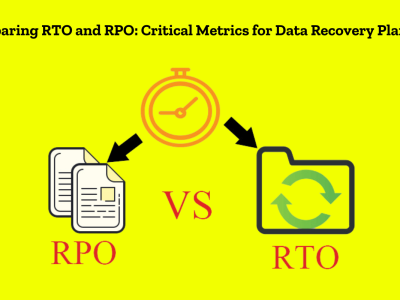In photography, achieving the perfect shot can be hindered by unwanted elements infiltrating our frames, from unexpected photobombers to intrusive signage. Thankfully, technological advancements have democratized the process of object removal from photos. This guide delves into the intricacies of removing unwanted elements and exploring AI background blur techniques. By the end, you’ll possess the expertise to effortlessly eliminate distractions and elevate the visual allure of your images.
Object removal from photo involves employing tools and techniques to seamlessly erase undesired objects while maintaining the image’s integrity. With careful selection and precise editing, you can achieve seamless results. Additionally, AI background blur adds depth and focus to your subjects by intelligently blurring the background. This technique mimics the aesthetics of professional photography, drawing attention to the main subject while enhancing visual appeal.
Whether you’re a novice or seasoned photographer, mastering these techniques is invaluable. Utilizing the right tools and adopting best practices ensures polished and captivating photographs. Embrace the power of object removal and AI background blur, and witness your images transform into visually stunning works of art.
Understanding Object Removal from Photo
Before delving into the practical aspects of Object Removal from Photo, grasping the underlying principles is essential. Object removal entails employing editing techniques to eliminate unwanted elements from an image while preserving its visual integrity. Whether it’s removing a person, logo, or any other object, the objective is to achieve a seamless and natural-looking result.
Object Removal from Photo involves meticulous selection and editing to seamlessly erase undesired elements without compromising the image’s overall composition. It’s about maintaining visual coherence while enhancing the aesthetic appeal of the photograph. Whether you’re a novice or seasoned editor, mastering the art of object removal requires patience, precision, and an understanding of editing tools and techniques.
By embracing the principles of Object Removal from Photo, you gain the ability to transform ordinary images into visually striking compositions. With practice and dedication, you’ll develop the skills necessary to produce professional-grade edits that captivate and inspire viewers.
Object removal from photos demands meticulous attention to detail and adherence to best practices to achieve seamless and professional-looking results. Below are key guidelines to consider when undertaking object removal tasks:
1. Selecting the Right Tool
The choice of software greatly influences the success of object removal endeavors. While conventional editing programs like Adobe Photoshop offer robust tools for object removal, newer AI-driven solutions are gaining prominence for their efficiency and accuracy. Assess your specific requirements and familiarity with the software before making a selection.
2. Patience and Precision
Successful object removal hinges on patience and precision. Rushing through the process can lead to subpar results and noticeable inconsistencies in the final image. Take ample time to meticulously select and remove the unwanted object, paying close attention to nuances such as lighting, shadows, and textures. Careful consideration of these elements contributes to a more natural and seamless outcome.
3. Non-Destructive Editing
Opting for non-destructive editing techniques is paramount when removing objects from photos. This approach preserves the original image and allows for adjustments to be made later if necessary. Utilize features such as adjustment layers and layer masks to maintain flexibility in your editing workflow. Non-destructive editing ensures that you can revisit and refine your edits without compromising the integrity of the image.
4. Refinement and Iteration
Object removal is often an iterative process that may require multiple refinements to achieve desired results. After initial removal, scrutinize the edited area for any remaining imperfections or artifacts. Employ tools like the clone stamp or healing brush to touch up blemishes and seamlessly blend the surrounding pixels. Iterative refinement contributes to a polished and professional finish.
5. Consistency in Style and Tone
Maintaining consistency in style and tone throughout the image is essential for cohesive results. Pay attention to factors such as color balance, contrast, and saturation to ensure that the edited area seamlessly integrates with the rest of the photograph. Strive for a harmonious transition between the removed object and its surroundings to avoid jarring discrepancies.
6. Practice and Experimentation
Mastering object removal requires practice and experimentation. Familiarize yourself with various tools and techniques available in your chosen editing software. Experiment with different approaches and refine your skills through hands-on experience. As you gain proficiency, you’ll develop a keen eye for identifying and effectively removing unwanted elements from photos.
Understanding AI Background Blur
AI background blur has emerged as a revolutionary addition to photography alongside object removal. This cutting-edge technology enables users to selectively blur the background of their photos, resulting in a professional-grade depth of field effect.
The introduction of AI background blur has transformed the way photographers approach depth and focus in their compositions. By leveraging sophisticated algorithms, this technology intelligently identifies the subject of the image and applies a subtle blur to the background, mimicking the natural bokeh effect produced by high-end camera lenses.
The beauty of AI background blur lies in its ability to enhance the visual appeal of photos with minimal effort. It allows photographers to isolate the main subject while creating a pleasing separation between the foreground and background elements. Whether you’re capturing portraits, landscapes, or still-life scenes, AI background blur offers a powerful tool for elevating the overall aesthetic quality of your images. With its intuitive application and stunning results, AI background blur is a must-have feature for any photographer seeking professional-looking compositions.
Best Practices for AI Background Blur
1. Natural-Looking Blur
Ensure that the background blur looks natural and does not appear artificial or overly exaggerated.
2. Selective Blurring
Use selective blurring to draw attention to the main subject of your photo while keeping other elements in focus.
3. Experimentation
Don’t be afraid to experiment with different levels of background blur to achieve the desired effect.
Conclusion
can profoundly enhance the quality and visual appeal of your images. By adhering to best practices and leveraging the appropriate tools, you can seamlessly remove unwanted objects and craft stunning, professional-grade photos. Whether you’re a seasoned photographer or an enthusiastic novice, integrating these methods into your workflow will elevate your photography to new heights of excellence. Embracing the power of object removal allows you to eliminate distracting elements, refining the composition and focusing the viewer’s attention on the main subject. Similarly, AI background blur offers a sophisticated way to add depth and dimension to your photos, creating a professional-looking bokeh effect that accentuates the subject and adds visual interest. By mastering these techniques, you gain the ability to transform ordinary images into captivating works of art. Whether you’re capturing portraits, landscapes, or still-life scenes, object removal and AI background blur provide invaluable tools for enhancing the overall impact of your photography. With dedication and practice, you can harness the full potential of these techniques to create images that resonate with clarity, beauty, and artistic vision.











